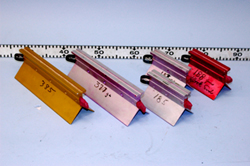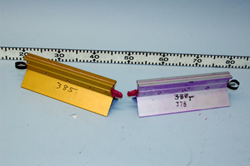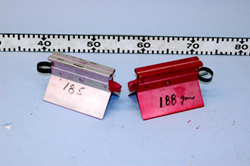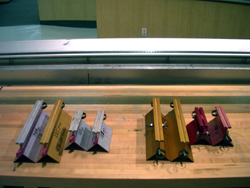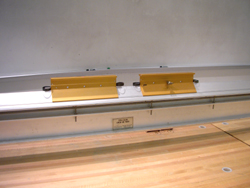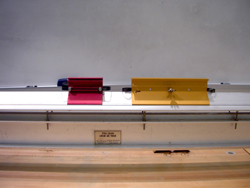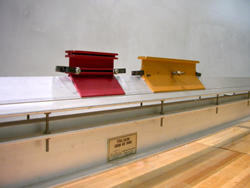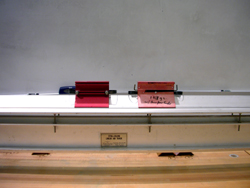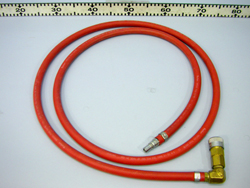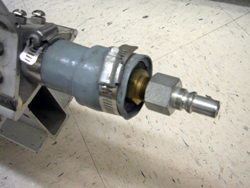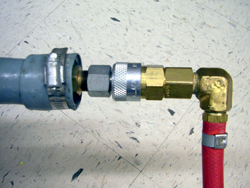Air Track Totally Elastic Collision, 1N30.33
Topic and Concept:
Linear Momentum, 1N30. Collisions in One Dimension
Location:
- Floor Item: ME, South Wall
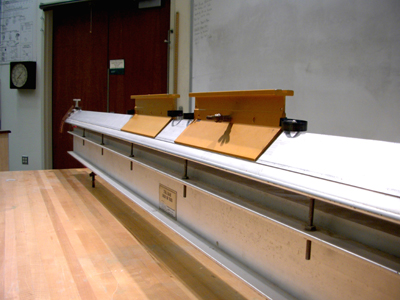
Abstract:
A moving glider collides with a stationary one, both having bumpers.
Equipment |
Location |
ID Number |
|
|
|
Air Track |
Floor Item: ME, South Wall |
|
Air Track Carts |
ME, Bay A4, Shelf #3 |
|
Red Clay |
Double Steel Door Bin Cabinet |
|
In Lecture Halls 2103, 2223, 2241 |
|
Important Setup Notes:
- N/A
Setup and Procedure:
Place air track on lecture bench, and connect the compressed air supply from the lower white panel of the Red & White Gas Cart to the track using an air hose.
- Place two gliders on the track, one on an end of the track and the other roughly in the middle.
- Make sure that the gliders have their respective spring-equipped sides facing each other.
- Turn on the air supply by opening the valve located on the lower white panel of the cart.
- If the gliders seem to slide in one direction, this is most likely due to the track being unlevel. Adjust the set screws until this no longer occurs. It is a good idea to do this ahead of time.
- Give the glider on the end a good push toward the glider at rest to create a collision.
Cautions, Warnings, or Safety Concerns:
- Make sure you are using compressed air and NOT methane gas which is extremely flammable!
Discussion:
In conservative systems, momentum is always conserved. In the lab frame, one glider is in motion and one is at rest. Thus, the total momentum of the system is P0 = m1 * v1 where m1 is the mass of the glider in motion and v1 is its speed. In an perfectly elastic collision, there is no loss of kinetic energy. Invoking conservation of kinetic energy and momentum then, the velocities of each glider after the collision can be determined in terms of their respective masses and the speed of the first glider. The result is this:
v1' = (m1 - m2) * v1 / (m1 + m2)
v2' = 2 * m1 * v1 / (m1 + m2)
From this result, it is easy to predict the outcome of a collision. The second glider will always obtain a velocity in the same direction as the first glider was moving. Its speed depends on the masses of both gliders and the initial speed of the first one. If the first glider is more massive than the second one, both gliders will move in the same direction. If the first glider is less massive than the second one, it will bounce back in the opposite direction from which it came. In either of those two cases, the first glider will always move at a slower speed than it was initially.
|
|
|
|
|
|
|
|
|
|
|
Videos:
References:
